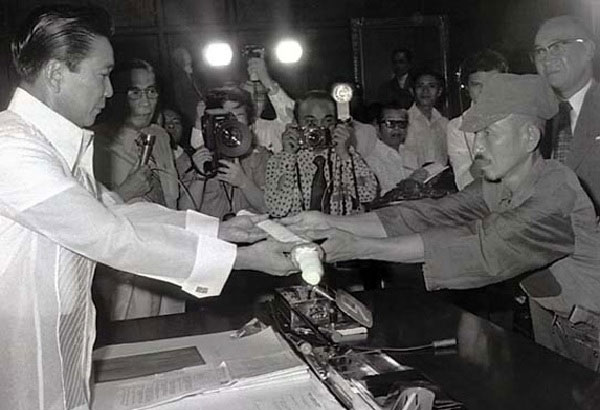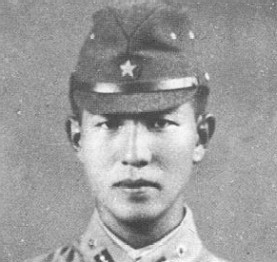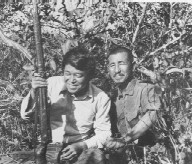
For most people, World War Two ended with explosions that shook the world, and led to the Japanese surrender at Baguio – but not for Hiroo Onoda
However, for Hiroo Onoda the war didn’t end until his former commander travelled to the jungles of the Philippines to relieve him of his duties in 1974.
In the meantime, the stubborn intelligence officer had continued to wage a guerrilla war all the time staying one step ahead of the authorities.
Onoda was born in 1922 in the Wakayama Prefecture of Japan. He belonged to a family that was proud of its long history as part of the samurai class, and his father was a sergeant in the Fourth Cavalry Brigade.
As soon as he turned 18, he signed up to the Imperial Japanese Army Infantry.

In December 1944 he was sent to Lubang Island and was ordered to do all he could to hamper enemy attacks, including destroying the airstrip and pier. Onoda’s orders also stated that under no circumstances should he surrender or take his own life — orders he clearly took very seriously.
Hiroo Onoda makes fateful decision
US and Filipino forces landed on the island in February 1945. Very soon, all but Onoda and three other soldiers had been killed or surrendered. Onoda led the survivors into the forest covered hills.
Lieutenant Onoda, along with Yuichi Akatsu, corporal Shoichi Shimada and private first class Kinshichi Kozuka continued with guerrilla activities and engaged in several shootouts with police.
The first time they saw a leaflet announcing that Japan had surrendered was in October 1945. It read: “The war ended on August 15. Come down from the mountains!” However, they decided that the leaflet was Allied propaganda and vowed to fight on.
Towards the end of 1945, surrender orders from an army general were were dropped by air, but again, the soldiers thought it was a lie. Their reasoning was that it contained the sort of grammatical errors that a foreigner might make.
As 1950 came around, Akatsu decided he had fought long enough, and surrendered to Filipino forces.
In 1952 there was another campaign of leaflet drops, this time including letters from their loved ones and family pictures. Again, they decided it was just a trick.
Quite understandably, the patience of the authorities was wearing thin, and efforts to capture the men intensified. In 1954 Shimada was killed in a shootout with a search party, and then in 1972 Kozuko was shot by two policemen during a guerrilla raid on a village.
Alone in the jungle
Now alone in the jungle, Onoda had no idea that he had become a living legend throughout the world.
In February 1974 Norio Suzuki, a young hippy, set off to travel the world, setting himself the task of finding: “Lieutenant Onoda, a panda and the Abominable Snowman, in that order.”
After four days of searching, he was able to tick the first of those targets off his list.

Hiroo Onoda described the moment they met in a 2010 interview: “This hippie boy Suzuki came to the island to listen to the feelings of a Japanese soldier. Suzuki asked me why I would not come out.”
The pair became unlikely friends, but Onoda still refused to surrender without orders from a superior officer.
Suzuki returned to Japan with photographs of himself and Onoda as proof of their encounter, and the Japanese government located Onoda’s old commanding officer, Major Yoshimi Taniguchi, who had since become a bookseller.
He flew to Lubang where on March 9, 1974, he finally met Onoda and commanded him hand over his sword and step down.
Though he had killed people and engaged in shootouts with the police over the years, President Marcos issued a pardon for the old soldier.
Surrender caused a sensation
News of his surrender caused a sensation in Japan, and Onoda was something of a national hero.
However, Onoda was unhappy being the subject of so much attention and troubled by what he saw as the withering of traditional Japanese values.
In April 1975, he followed the example of his elder brother Tadao and left Japan for Brazil, where he raised cattle. He married in 1976 and assumed a leading role in Colônia Jamic (Jamic Colony) a Japanese community in Mato Grosso do Sul.
However, when he read a news report about a Japanese teenager who had murdered his parents, he decided to return to Japan and “save its soul”. In 1984 he founded the Onoda Shizen Juku (Onoda Nature School) which organised educational camps for young people throughout Japan.
Onoda revisited Lubang Island in 1996, donating $10,000 to the local school.
Hiroo Onoda died of heart failure in January 2014, in Tokyo, due to complications from pneumonia. He was 91 years old and had otherwise lived out his years in perfect health.
